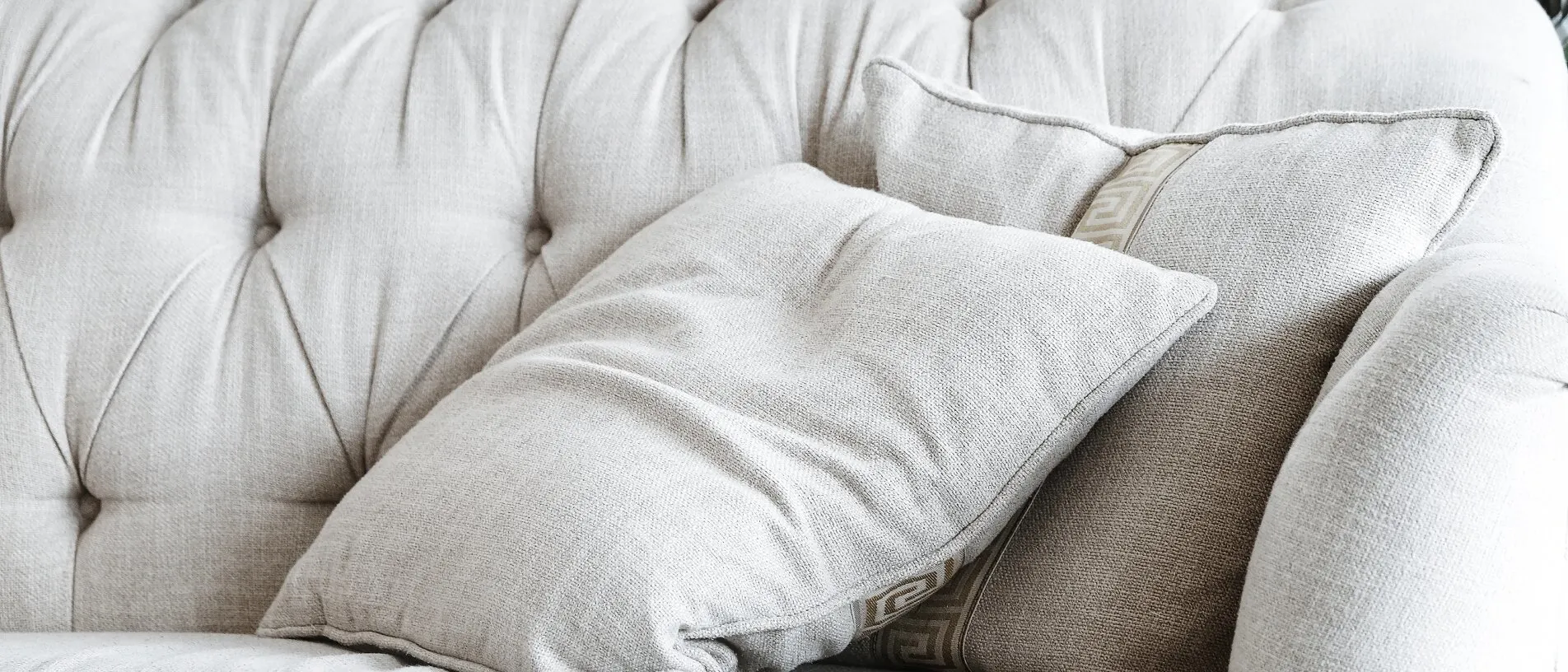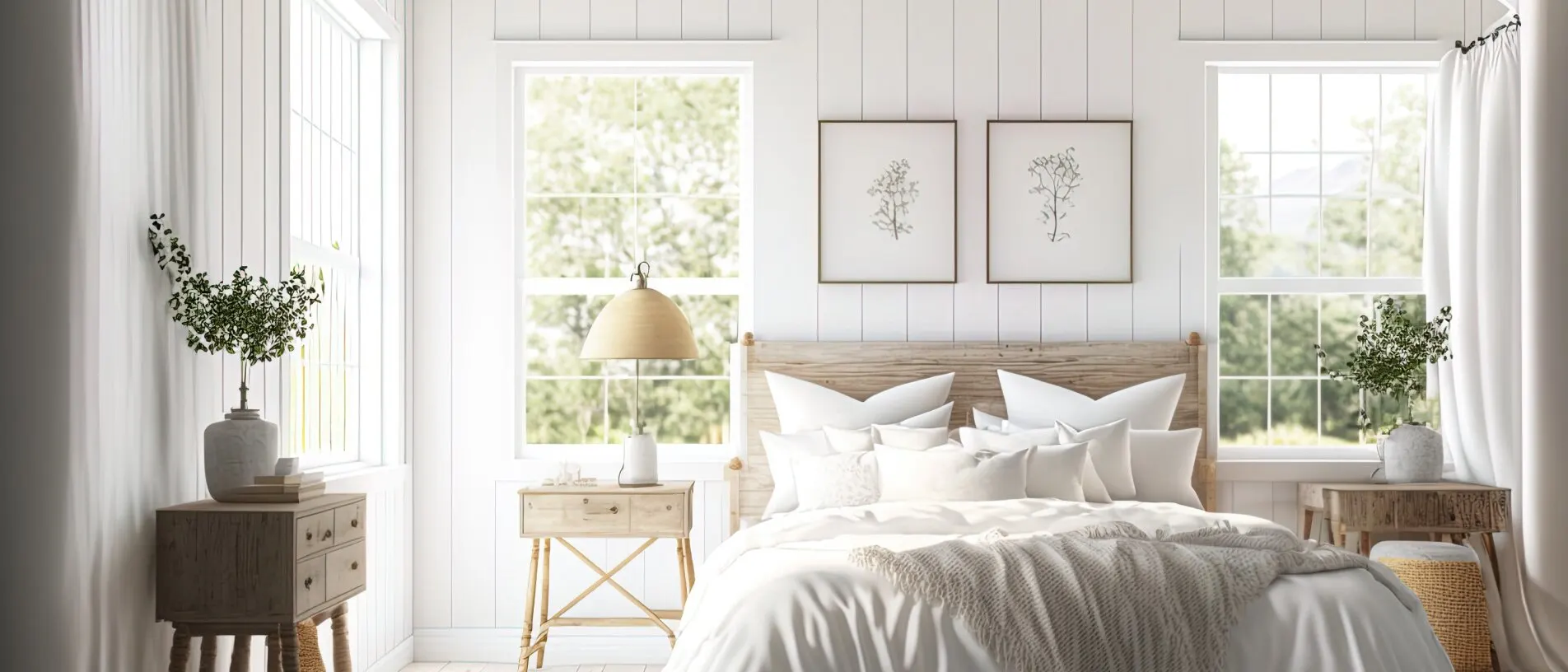You're on the list
By signing up, you agree to receive email marketing.


Linen furniture and upholstery lend a distinctly fresh look to a room, creating a vibe that's equally sophisticated and relaxed.
Durable and soft, linen is made from flax, a common leafy plant. This makes linen affordable and comfortable. The catch? Linen fabrics are prone to stains, smudges, and signs of wear. This means they need consistent cleaning to uphold their quality.
But don't let that intimidate you. With the right tools and regular maintenance, you can keep your linens clean, soft, and fresh.
The quickest and easiest way to know if you have linen is by checking the label and furniture care code. If you can't find one or the label's faded, you can usually get information about furniture materials on a company or manufacturer's website.
Next come the eye and touch tests. Linen has a subtle sheen without being glossy. It drapes well and you notice a weave pattern when you look at it up close. As far as touch goes, most linens have a pronounced texture that feels almost bumpy. They are crisp when new, but get softer and more pliable once washed.
If you're unsure whether you have linen fabrics in your decor, ask a furniture specialist or upholsterer before you try cleaning them.
From electronic gadgets to household items, different tools can help you clean linen:
Available in dozens of models, machine cleaners are the most efficient at removing debris.
Feathered or soft-bristled brushes won't snag the fabric.
They'll let you wipe down surfaces without leaving lint.
Choose a pH-neutral cleaner designed for delicate fabrics.
This everyday item is cheap and effective for absorbing odors.
You'll need these for organic stains such as sweat, oils, food, or pet urine.
These handy tools are a must for removing hairs in households with pets.
Use them in high-traffic areas to extend the life of your linens.
Extra airflow speeds up drying and prevents moisture from lingering in the fabric.
From sofas and couches to loveseats and accent pieces, there are different ways to clean linen furniture:
The vacuum is your most trusted ally when it comes to cleaning linen. Vacuums are perfect for removing dust and dirt and preventing them from seeping into the fabric. For the most effective cleaning, make sure your vacuum has upholstery attachments and a handheld component to let you reach corners, crevices, and other hard-to-reach places in upholstered furniture.
When a spill inevitably happens on linen fabrics, it's vital that you spring into action and act quickly. Grab a clean, dry cloth and immediately tend to the affected area to avoid permanently marking linen.
Although stubborn stains may eventually need more rigorous scrubbing, start by gently dabbing the spill to absorb as much liquid as possible. Forgetting this and furiously rubbing fresh spills will cause the stain to embed deeper into linen.
Non-abrasive, pH-neutral detergents and cleaners are best for cleaning linens. You can also make a mild cleaning solution by diluting white vinegar with water in a spray bottle. Always read the instructions carefully and test new cleaners to ensure they don't damage or discolor expensive linens.
While it may be tempting to use hot water to get rid of stains, any temperature above 120°F could cause linens to shrink or warp. If you're washing yours in a machine, use a gentle cycle and cold water to preserve the integrity of the fabric.
If you have linen sheets and pillowcases, follow these steps to clean bedding like a pro:
Read the labels and directions for special or specific washing instructions.
If possible, pre-treat stubborn stains with baking soda or a stain remover.
Separate and wash dark and light bedding to prevent color bleeding.
Wash linens with water that doesn't get hotter than 104°F (40°C) to avoid shrinkage.
Use the gentle cycle. Some washing machines even have a special setting for linens.
Use a mild detergent and avoid bleach or fabric softeners, which can weaken fibers and cause fading.
Air-dry your bedding if you can to maintain its softness and breathability.
Tumble dry or use low heat on the machine, as high temperatures can damage the material.
Take linens out when they're still slightly damp to make it easier to iron and reduce wrinkles.
Iron for a crisp look, and store your linens in a dry place away from sunlight.
Air-dry your bedding if you can to maintain its softness and breathability.
Tumble dry or use low heat on the machine, as high temperatures can damage the material.
Take linens out when they're still slightly damp to make it easier to iron and reduce wrinkles.
Iron for a crisp look, and store your linens in a dry place away from sunlight.
Many substances can permanently mark linen, especially when you don't deal with spills promptly. Let's look at some of the most stubborn culprits:
Getting ink on your linens will permanently stain them.
Grease and cooking oils quickly get into the fibers and become tough to remove.
Water with high mineral content can leave lasting marks when you leave it unattended.
Harsh disinfectants and chemicals such as bleach will cause fading and discoloring.
A residual stain is typical of a red wine spill that wasn't cleaned immediately.
Tannins, a yellowish-brown substance, makes these drinks common culprits of permanent stains in linens.
Spices, particularly turmeric, have an intense pigmentation that will persist after many washes.
There's a reason you'll find linen furniture and upholstery across dozens of styles and interior design themes. From farmhouse, traditional, and modern to coastal, contemporary, and bohemian, linen fabrics make a room feel cool and airy while quietly showing class.
Whether you're taking in your dining chairs for a day of beauty or giving your bedroom a makeover, there's nothing like clean, fresh linens to add a light touch to a space.
You're on the list
By signing up, you agree to receive email marketing.